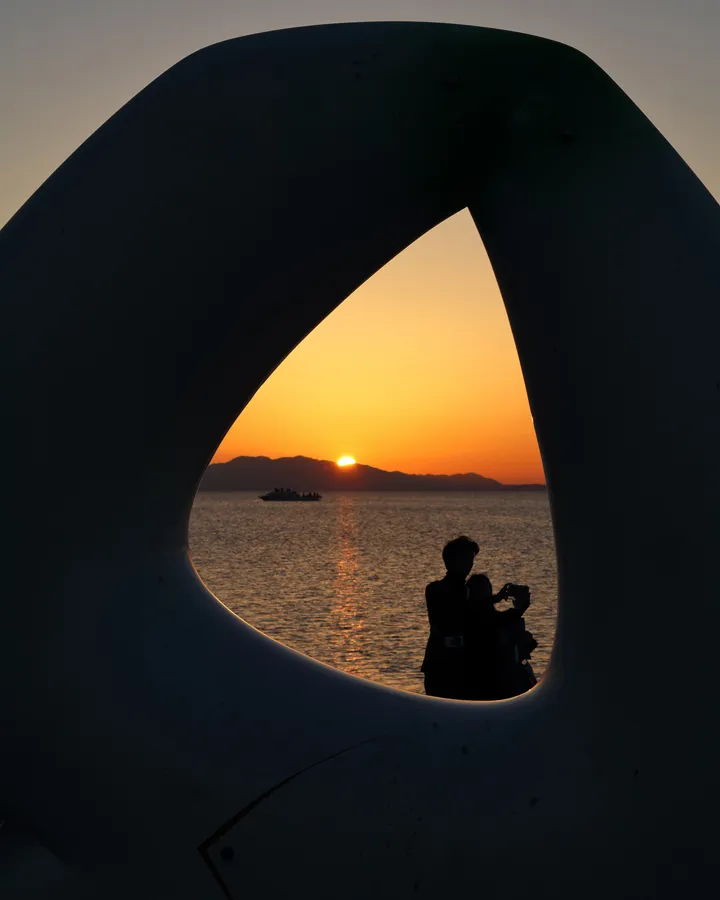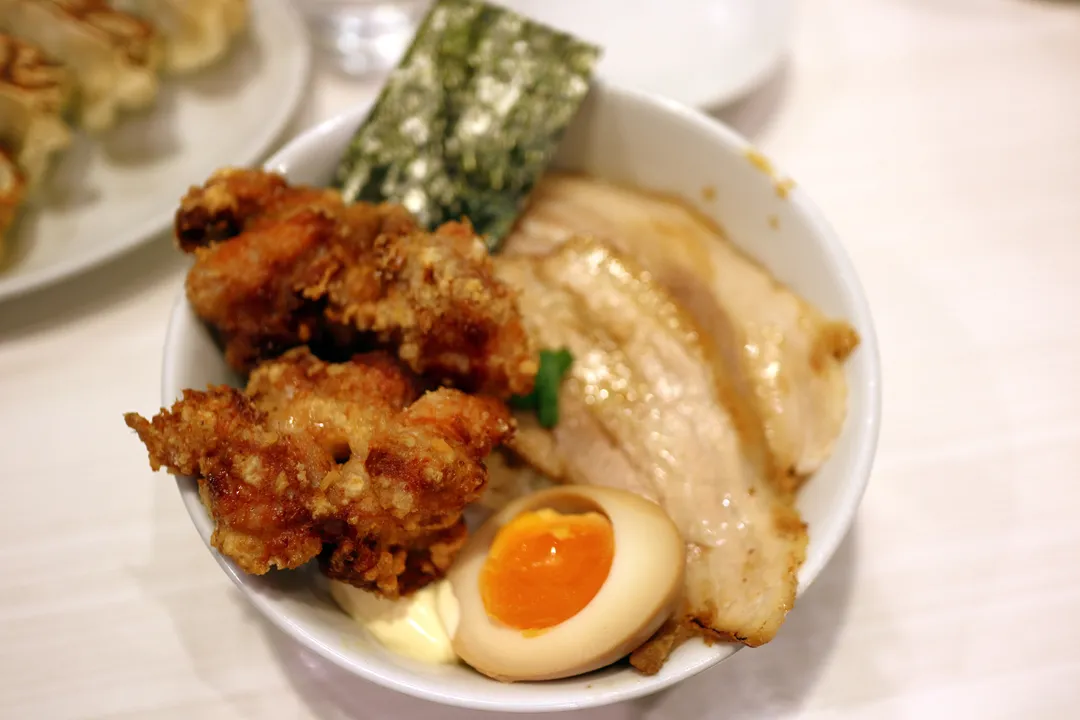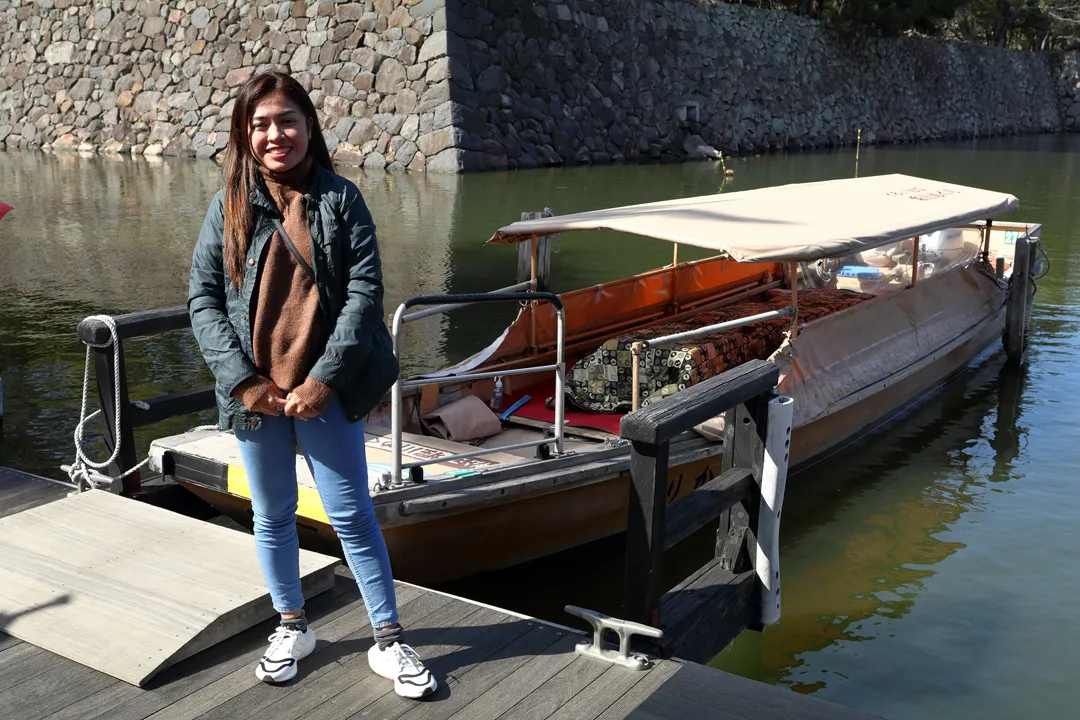While Matsue, the capital of Shimane Prefecture, is the smallest prefectural capital in Japan by population with only around 200,000 residents, it has more to offer visitors than some of its larger peers such as Niigata or Fukushima. Most notably, it contains Matsue Castle, one of Japan’s 12 remaining original castles.
After our train ride back from Izumo, it was already mid-afternoon. In the winter, the sun sets earlier, so we headed to our last stop of the day, the Shimane Art Museum, to watch the sunset from the shore of Lake Shinji.

The temperature dropped quickly after dark, so we walked back to the station area and tried to stay warm by eating ramen. Then it was time to return to our hotel for the night.

On our second day, we had the entire day to explore the city. Although Matsue has no urban rail system, the city center is small enough to be walkable. First, we went straight to Matsue Castle, built in the 17th century and one of the two original castles in Japan to be painted black (along with Matsumoto Castle). Surprisingly, there were far fewer visitors at the castle than at the Izumo Grand Shrine, so the grounds were quiet and felt more like a local city park.

While the castle appears to have five stories, it actually has six. The hidden sixth level was a design feature intended to confuse enemies. However, its effectiveness is unknown because the castle never came under attack during its history.

The keep served as the command post and innermost stronghold but the castle’s defenses additionally comprised three layers of outer walls and a moat. The moat in particular is unique among the existing castles in that it connects to a city-wide network of canals and rivers, which are still maintained today by the government as a kind of public space. This extensive system of waterways earned Matsue the nickname “City of Water” (水の都).

We decided to try the boat tour, which starts near the castle entrance and takes about one hour to go around the canals counterclockwise. The only other tourists there were a Japanese couple so we didn’t need to queue at all and had plenty of space in the boat.

Despite there being only floor seating, it was more comfortable than it looked because the boat was equipped with a heater in the middle. A minor disadvantage was having to face inside instead of outside or forward.

The roof of the boat could be mechanically lowered, a necessary innovation to deal with the extremely low clearance under several of the bridges over the canals. When passing underneath the bridges, we had to keep our heads down very close to the table – this seems to be something unique to Matsue and not found anywhere else in the world.

By the time we finished the boat tour, it was already past 13:00, so we quickly looked for lunch nearby. We found the Japanese Restaurant Bon in the first floor of a government building. The simple menu offered a set meal for 660 yen with a choice of teriyaki chicken or fried fish. I liked the fish but Ritz wasn’t impressed with the chicken, although I think that was because she was only familiar with the teriyaki chicken in the Philippines, which is of questionable authenticity.
After lunch, we started walking south but after one block we passed Kitagaki Meat Shop. We dropped in for a croquette made with Shimane wagyu beef.

We then continued south and crossed the Shinjiko Ohashi Bridge, the highest and widest of the several bridges connecting the northern and southern halves of the city.

Our next stop was the Sanin Godo Bank Headquarters, very close to the south end of the bridge. Despite its modest height of 75m, it is the tallest building in the prefecture; it boasts an observation deck which provides panoramic views of Matsue, Lake Shinji, and the surrounding mountains.

The observation deck seemed to be virtually unknown to tourists because it was empty, save for a lone security guard, who unexpectedly spoke to us in English and pointed out a group of mountains to the northeast that resembled the outline of a sleeping Buddha.

As for other views, the east, west, and south sides were fully unobstructed.

Meanwhile, a view to the north was only available through one small window.

We took some time to rest since there was plenty of seating and our itinerary for the day had been completed.

Finally, we started walking back to our hotel before it began to get dark (and therefore colder). The following day would be the longest and most tiring of our entire trip and required a very early start, so we wanted to make sure that we didn’t go to bed too late.

Next: Bitchū Matsuyama Castle: Japan’s Last Remaining Mountain Castle
